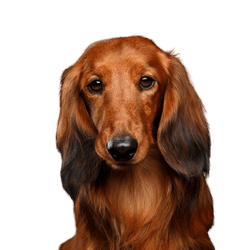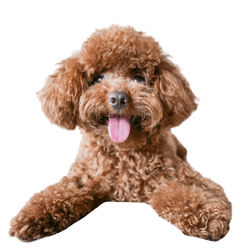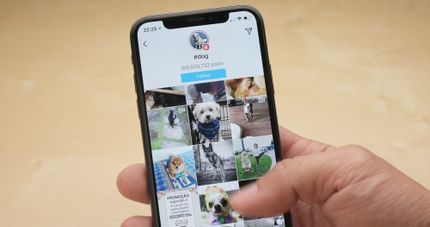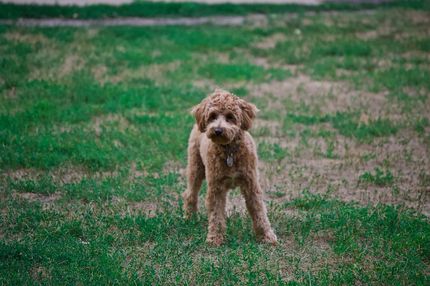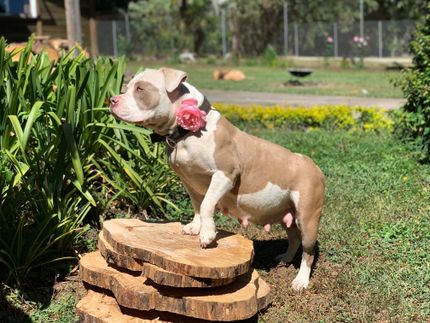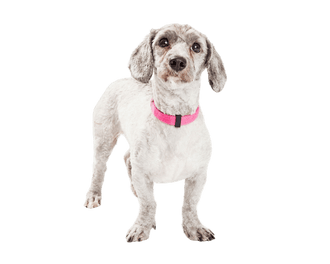
Doxiepoo:Miniature Dachshund and Miniature Poodle Mix
Doxiepoo
Facts & Origin
Doxipoo Mix Dog
- Origin: Miniature poodle, Dachshund
- average size: 40-60cm
- average weight: 4.5-14kg
- average age: 10-15 years
The Doxiepoo, also known as Dachshundpoo, Dachshunddoodle or Doxiedoodle, is a cross between Dachshund and Miniature Poodle, which has been bred for around 15 years. Poodles originate in Germany, where hunters used them as water dogs to retrieve shot ducks from lakes and rivers. Dachshunds, also originally from Germany, were themselves the hunters, nowadays they mostly function as companion dogs. Depending on how many positive qualities they have inherited from their parents, the Doxiepoo has a short, hypoallergenic coat and is easy to train. It is difficult to give a uniform description for these cute dogs because size, coat colour and structure, weight and much more depend on the respective cross - a conversation with the Doxiepoo breeder can be helpful.
| Alternate Name | Doxiedoodle |
| Origin | Germany |
| Life expectancy | 10 - 18 years |
| Care requirements | low-maintenance |
| Activity level | average |
| FCI group | not recognised |
| AKC group | not recognised |
| KC group | not recognised |
More Miniature Poodle mixes
Attitude, character and temperament of the breed
Temperament of the Doxiedoodle
Doxiepoos are well-behaved, clever dogs who love to be the center of attention. In terms of character, they are loving, loyal and strongly orientated towards people. They are good guard dogs, like many small dogs they bark when there are signs of danger or strangers.
Character
Usage

Health and breeding information
Buying a Doxiepoo - what you should consider
Doxiepoo puppies are very small and petite, extreme care is required when handling them, especially when young children want to touch them. If your Doxiepoo puppy grows up with small children, it will easily see them as part of his family, conflicts can arise when they are in contact with other dogs, which is why it is recommended to keep them as the only dog in the household. In any case, it is important to socialise them well from an early age. In addition to this, the puppies tend to overeat, so always keep an eye on their diet. Although the poodle learns quickly and needs fewer repetitions to learn tricks than other dogs, your dog may have inherited the stubbornness and sense of independence of the Dachshund. The only thing that helps in this case is to be consistent, maintaining a positive attitude and rewarding good behavior with treats. These designer dogs also tend to shed a lot of hair and bark a lot, they may also be afraid of loud noises. Before buying a Doxiepoo, seek out an experienced, trustworthy breeder who will educate you about the health of the dog's parents.
Health problems
No matter how good your Doxiepoo breeder is, they will never be able to fully guarantee the health of your little animal. As a mixed breed, they may have inherited their parents' health problems, in case of the Dachshund this can be
- Cushing syndrome,
- different eye problems,
- Hip dysplasia,
- Intervertebral disc disease,
- Heart problems,
- Urinary tract diseases and
- Seizures.
On the part of the miniature poodle this can be
- Diabetes,
- Epilepsy,
- Heart disease,
- Ear infections,
- Skin problems and
- Problems with the digestive tract.
The longer the back of the dog (a Dachshund criterion), the higher the chances that the animal will suffer from spinal pain and intervertebral disc protrusion. In order to prevent problems with their intervertebral discs, it is advisable not to allow the Doxiepoo to jump on furniture or go up and down the stairs.


Appearance of the Doxiepoo
Fur length, texture and colour can vary greatly - from short coarse hair to longer wavy fur in the coulours black, brown, beige, gray, white or, of course, two or more different colours are also possible. The Dachshund-Poodle mix has an elongated body, short floppy ears, a sensitive nose and short stocky legs. Even though the dogs are of a short physique, they are very active and need a good amount of exercise every day.
| Fur length | short - medium |
| Fur | flat coated - curly |
| Ear shape | Triangle - Floppy Ear |
| Tail | short - lang |
| Anatomy | rugged, sporty |
| Size ♀ | 20 - 50 cm |
| Weight ♀ | 4 - 13 kg |
| Size ♂ | 20 - 50 cm |
| Weight ♂ | 4 - 13 kg |
| Suitable For | suitable for allergy sufferers, Seniors |
Colors
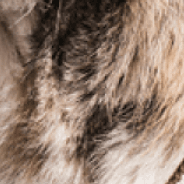
Known Diseases
Eye diseases
Often occur with allergies and intolerances.
Epilepsy
Definition: Dog has epilepsy if, for example, at least two epileptic seizures occur more than 24 hours apart.
Skin inflammations
Can be hereditary in certain breeds.
Heart disease
Can occur frequently in dogs and can sometimes be treated with medication.
Patellar luxation
Patellar luxation is the term used to describe a displacement of the kneecap, which is one of the most common causes of lameness in dogs.
Overweight
Often, unfortunately, the dogs very much under excess weight. But the dogs themselves are never to blame!
Useful Articles
You can find articles that might interest you in the dogbible blog to match your favorite breed.
Visit our magazineto stay up to date on dog trends.
To find out more, view our Privacy Policy
Find here the breed that suits you and find out what character traits it has. Here you can also learn more about the origin, size and weight of your favorite breeds.
Matching your favorite breed, you'll find articles that might interest you on the dogbible dog blog.
This genius hack to trim your dog’s nails and more tips
How much does a vet visit cost for a dog?
The 10 most beautiful hiking routes with dog in Germany
